It’s that time of year again when the gates at the bottom of Magnolia Lane open to the world and the manicured green grass, blue-tinted water, white dogwoods and pink azaleas of Augusta National go on show. History emanates from every corner of the famous former plant nursery which has come a long way from its early financial struggles in the 1930s to its closure during World War II when cows grazed the land before becoming one of the most famous and hallowed golf courses in the world.
1st: Tea Olive – Par 4, 445 yards
2018 rank (hardest to easiest): 3rd (stroke average: 4.279) with 18 birdies, 179 pars, 71 bogeys, 11 double bogeys and 1 other.

Rory McIlroy won’t want to remember his tee shot on this hole in the final round last year when he went so far right it was almost out of bounds. From the tee the right fairway bunker limits space with the drive while the approach plays straight uphill. Originally there was a house built behind this first green as part of a plan in the early years of the club to sell property around the course. However, when finances took an upturn the idea was quickly abandoned and the house was demolished.
2nd: Pink Dogwood – Par 5, 575 yards
2018 rank: 15th (4.807) with 3 eagles, 86 birdies, 154 pars, 36 bogeys and 1 double bogey.
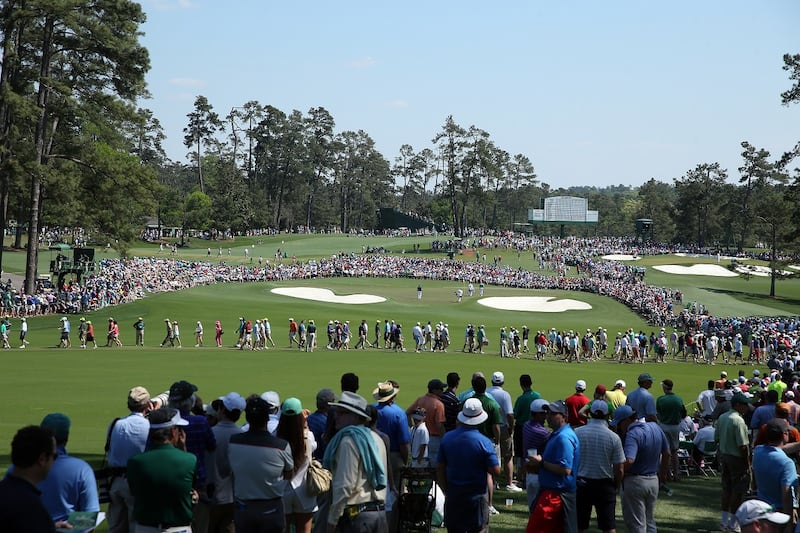
An early birdie chance. Plays steeply downhill and doglegs to the left. While the drive requires a draw, the second requires a slight fade into the angled green which runs from left to right. Louis Oosthuizen famously made albatross here in 2012 while McIlroy missed a golden opportunity for eagle in the final round last year which would have tied him for the lead with Reed. This is the longest Par 5 of the four on the course but, because it plays so steeply downhill, is still well reachable in two, sticking to the philosphy of co-founder Bobby Jones who believed Par 5s should always present two good shots with a chance for eagle.
3rd: Flowering Peach – Par 4, 350 yards
2018 rank: 14th (3.929) with 58 birdies, 184 pars and 38 bogeys.
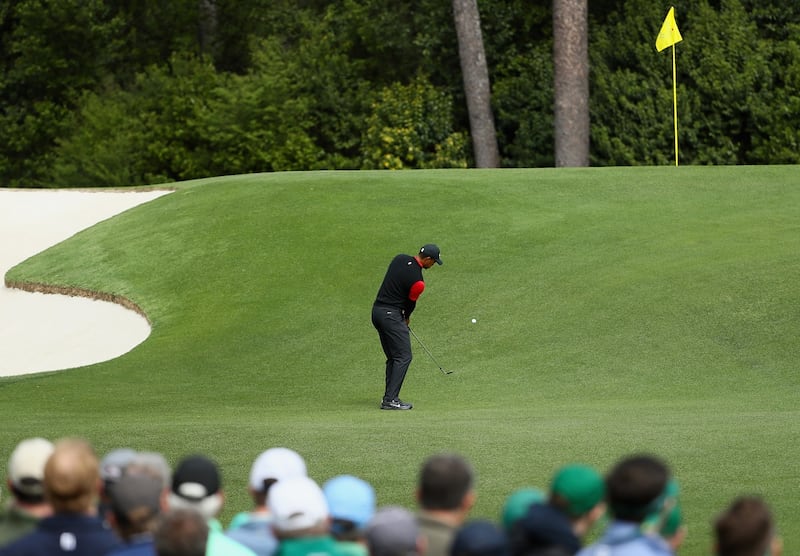
A lot of players will take driver and try to get their tee shots as close as possible to this green, eliminating the four fairway bunkers, but that leaves a tricky pitch up a huge false front. It’s one of those approach shots where you’re sometimes better off being further back with a less delicate shot. This hole still stands pretty much exactly as it did when the course opened in 1933.
4th: Flowering Crabapple – Par 3, 240 yards
2018 rank: 2nd (3.318) with 18 birdies, 162 pars, 94 bogeys, 5 double bogeys and 1 other.
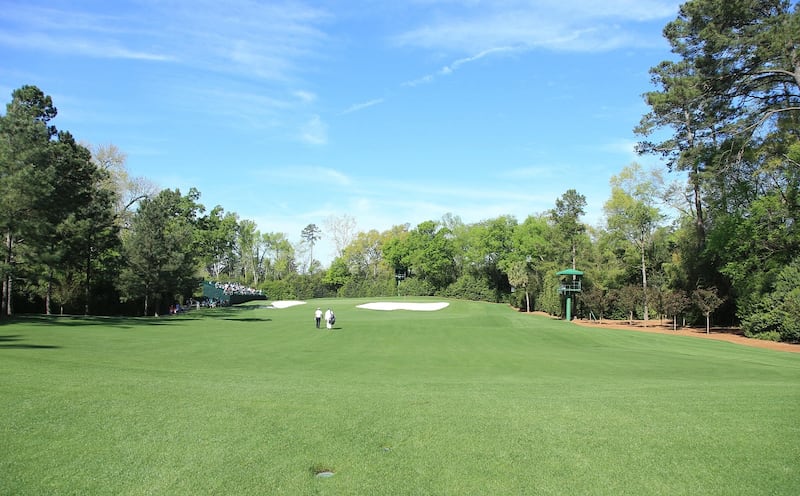
A beast of a Par 3. Any player in the field will take four pars here for the week. A raised green with steep slopes on either side make it a tiny target for such a long Par 3. Landing in either of the two bunkers can sometimes be a saving grace. With the tee box sheltered in a group of trees it can be very difficult to gauge the wind, making club selection a nightmare.
5th: Magnolia – Par 4, 495 yards
2018 rank: 6th (4.164) with 26 birdies, 186 pars, 64 bogeys and 4 double bogeys.
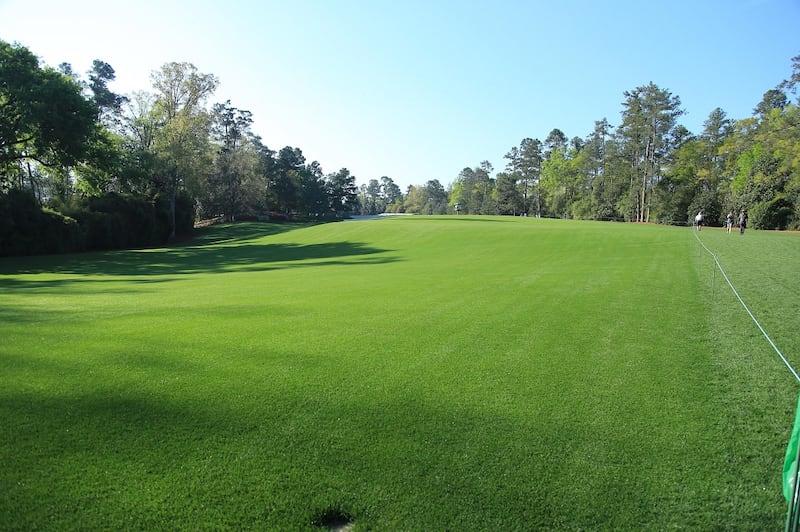
According to the 2019 media guide this is the only hole which has been changed with the green-jacketed officials at Augusta pushing the tee box back 40 yards to make a very tough Par 4 even harder. Another dogleg left, it requires a big carry to get over the bunker located right at the turn. Players unable to make that carry of 300 yards or so will be faced with a long iron into a green sloping from front to back. When designed in 1933 this hole was based on the Road Hole at St. Andrews, known to be one of the toughest Par 4s in the world. With 40 yards now added on, this Par 4 in Georgia could well challenge its counterpart in Fife for that tag.
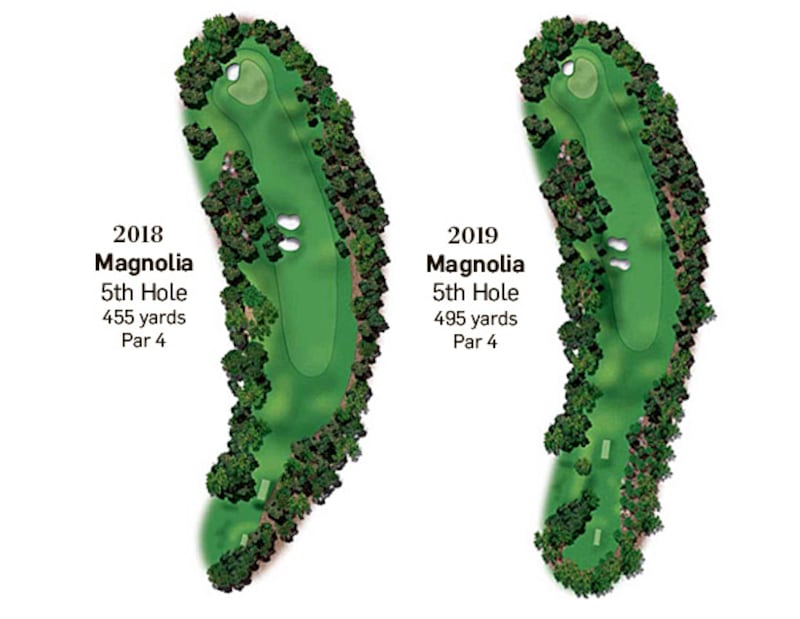
6th: Juniper – Par 3, 180 yards
2018 rank: 8th (3.129) with 31 birdies, 188 pars, 56 bogeys, 4 double bogeys and 1 other.
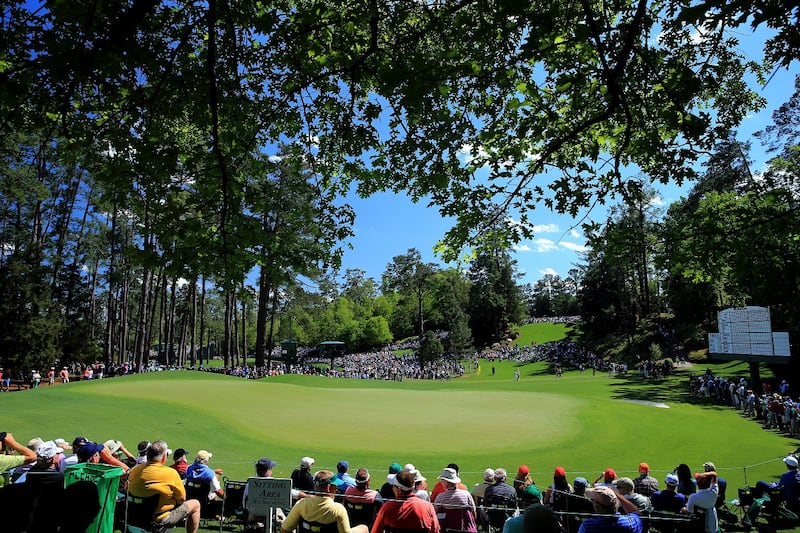
The tough holes just keep coming at Augusta, particularly on this part of the front nine which can often be the place for patience and pars before the back nine opens up for birdies. The second of the Par 3s plays sharply downhill – so much so that the spectators sit on the slope with players hitting over their heads. This green slopes sharply to the right to up on the left side can be dead.
7th: Pampas – Par 4, 450 yards
2018 rank: 4th (4.207) with 1 eagle, 42 birdies, 150 pars, 73 bogeys, 13 double bogeys and 1 other.
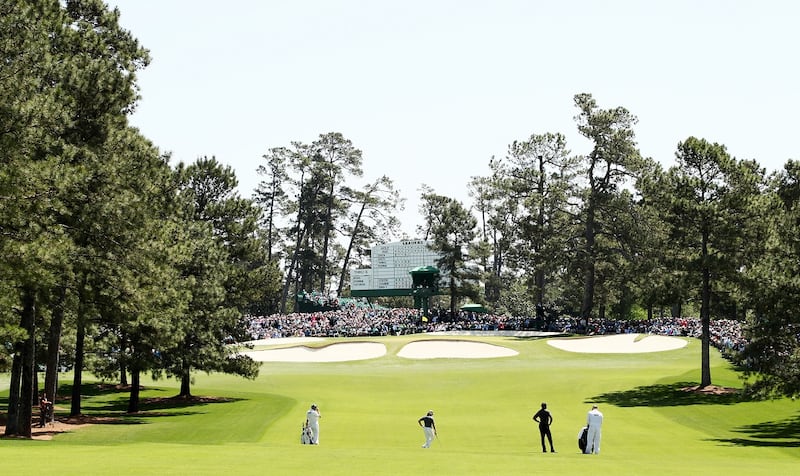
This hole has been changed almost more than any other over the years with significant length added to make it into one of the hardest Par 4s on the course. The drive is hit through one of the tighest corridors of trees on the course before the approach plays even tougher with five bunkers surrounding a green which sits well above the fairway, making it one of the hardest surfaces to find.
8th: Yellow Jasmine – Par 5, 570 yards
2018 rank: 16th (4.718) with 6 eagles, 88 birdies, 166 pars, 19 bogeys and 1 double bogey.
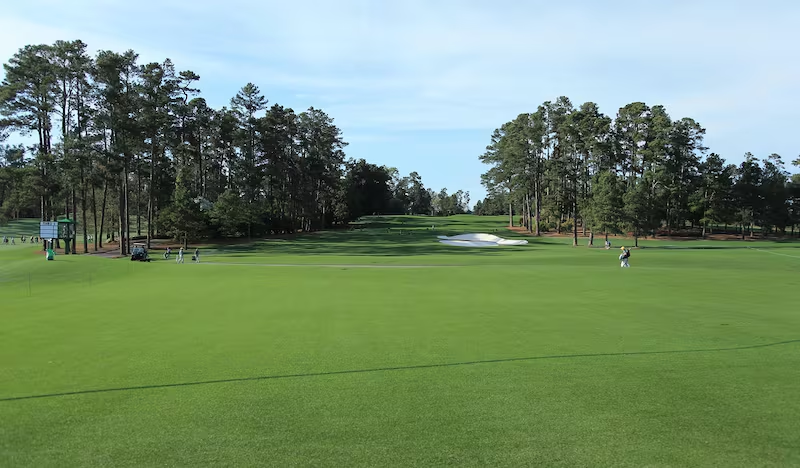
A dogleg right with the second shot playing straight uphill to a narrow green. A blind second shot is generally a whack up the right-hand side, leaving a good chance to get up and down for birdie. With no bunkers around the green it is the run-off areas and the mounds which can cause problems although McIlroy eliminated all of that on Saturday last year when he pitched in for eagle from the right hand side of the green.
9th: Carolina Cherry – Par 4, 495 yards
2018 rank: 7th (4.143) with 37 birdies, 176 pars, 58 bogeys, 8 double bogeys and 1 other.
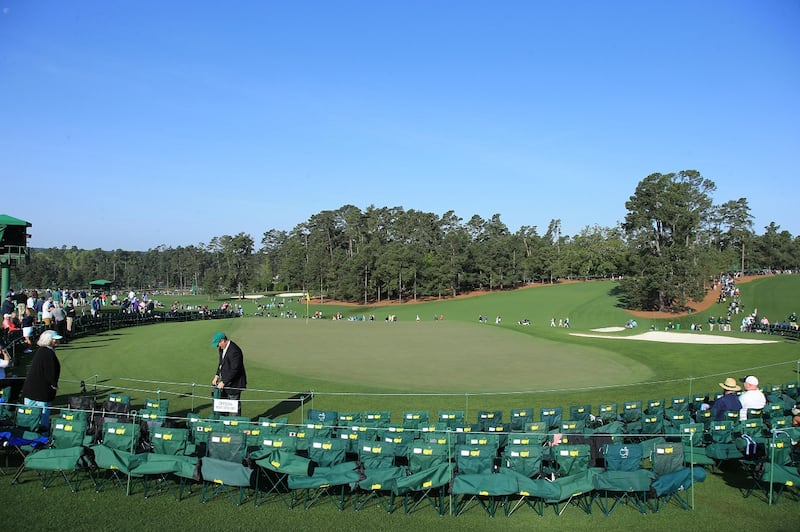
Another hole that plays uphill to the green but, with the fairway sloping down, it makes the approach particularly difficult. Hitting off a downhill lie to a green way above which slopes severely back to front requires perfect club selection or the ball will not hold the putting surface. Fail to get up onto the correct plateau and it could come all the way back down and off the green, something Greg Norman won’t want to remember from his capitulation in 1996 when he started the day with a six-shot lead but lost out to Nick Faldo.
10th: Camelia – Par 4, 495 yards
2018 rank: 11th (4.082) with 45 birdies, 177 pars, 50 bogeys, 6 double bogeys and 2 others.
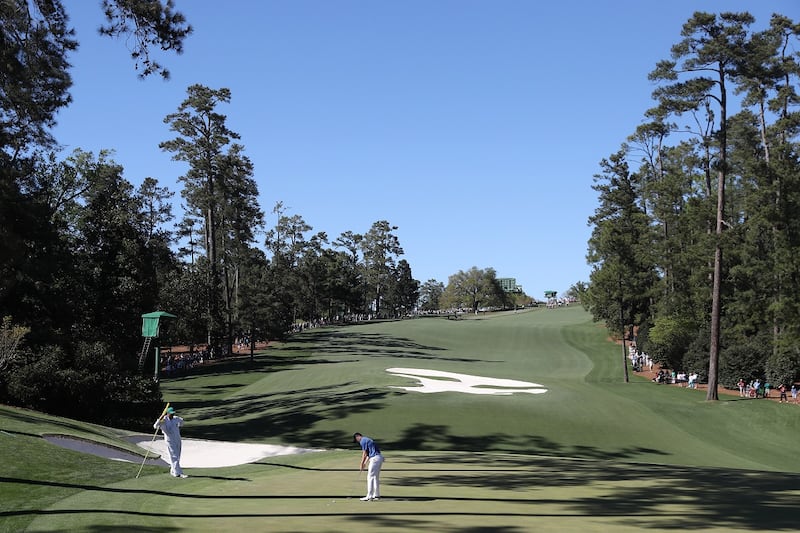
The Masters doesn’t start until the back nine on Sunday etc, etc. As we’ve seen, that cliché couldn’t be further from the truth with some of the holes on the front nine easily capable of ruining a player’s chances. But then comes the 10th and memories of 2011. This was the opening scene of McIlroy’s collapse eight years ago when his tee shot struck a branch and finished up beside the Butler Cabin to the left of the fairway. The huge bunker in the middle of the fairway has been largely made obselete over the years but this is a hole that doesn’t yield many birdies throughout the week with the approach yet again playing uphill while the dappled shadows on the green can cause putting problems. This hole played quite a bit easier than usual last year but miss the green to the right and a high number could be on the cards.
11th: White Dogwood – Par 4, 505 yards
2018 rank: 1st (4.40) with 13 birdies, 164 pars, 82 bogeys, 20 double bogeys and 1 other.
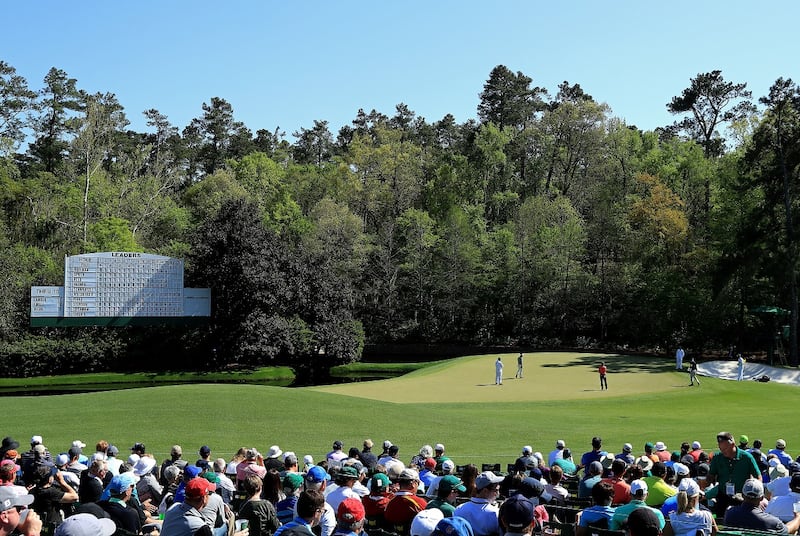
Amen Corner doesn’t technically begin until the approach shot to this green but the tee shot here is absolutely crucial to set up a good angle. A virtually dead straight tee shot or a very slight fade is required off the tee through the corridor of trees to leave the correct angle into the green with the approach sloping steeply downhill and everything kicking left towards the water while the wind can also howl given that the fairway is at such a height. Expect to see lots of bail outs to the right. If any players hits it close to the hole on this one you can be fairly sure they’ve pulled it.
12th: Golden Bell – Par 3, 155 yards
2018 rank: 9th (3.107) with 42 birdies, 177 pars, 50 bogeys and 11 double bogeys.
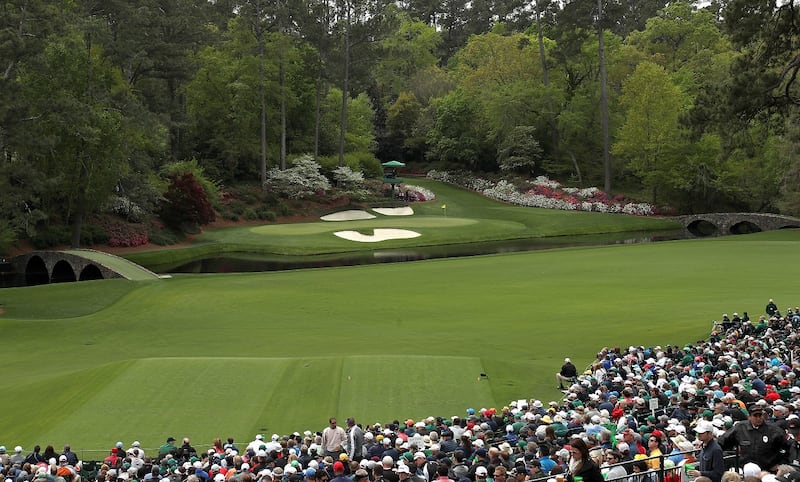
From Fred Couples to Jordan Spieth and beyond this is one of the most famous Par 3s in the world. Long is not good, short is worse because of the water. A slight fade over the front bunker to the heart of the green is the perfect shot. Sounds easy, but it’s far from that. The wind plays havoc on this hole with studies showing that it can swirl and even double in speed within seconds because of the high pines which surround the green. This hole has also seen very little change since the club opened 86 years ago but that’s hardly surprising when many believe it achieves perfection when it comes to Par 3s.
13th: Azalea – Par 5, 510 yards
2018 rank: 18th (4.614) with 9 eagles, 128 birdies, 112 pars, 24 bogeys and 7 double bogeys.
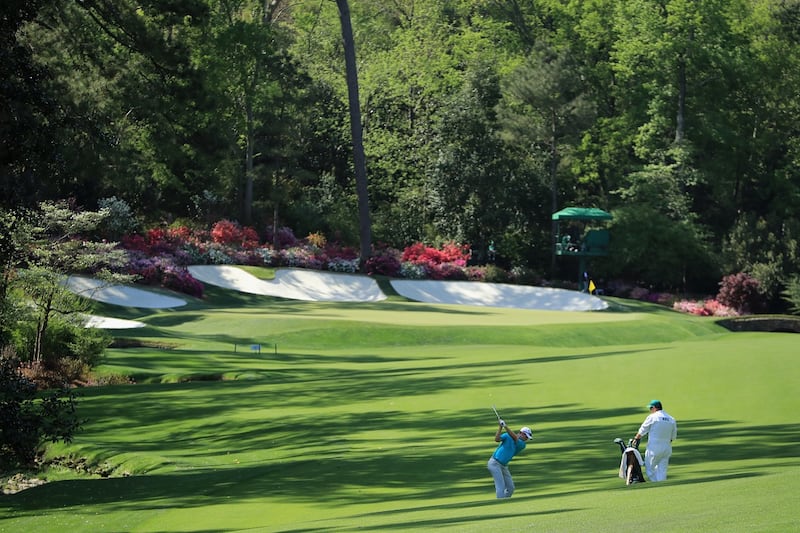
Perhaps the best hole on the course and one of the very best risk and reward holes anywhere around the world. A high draw is required around the corner with the tributary of Rae’s Creek along the left and trees up the right. A hanging lie is almost guaranteed for the second shot which must also carry the water. Short and it’s swimming, long faces a pitch back down the slope on a glass-like green with the water lurking. Let’s not forget that back in 2005, facing a putt from the top of this green towards a front pin, Tiger Woods managed to roll it all the way off the green and into the water. It’s a mark of Augusta that even the easiest hole on the course (statistically) can still cause havoc.
14th: Chinese Fir – Par 4, 440 yards
2018 rank: 12th (4.057) with 44 birdies, 181 pars, 50 bogeys and 5 double bogeys.
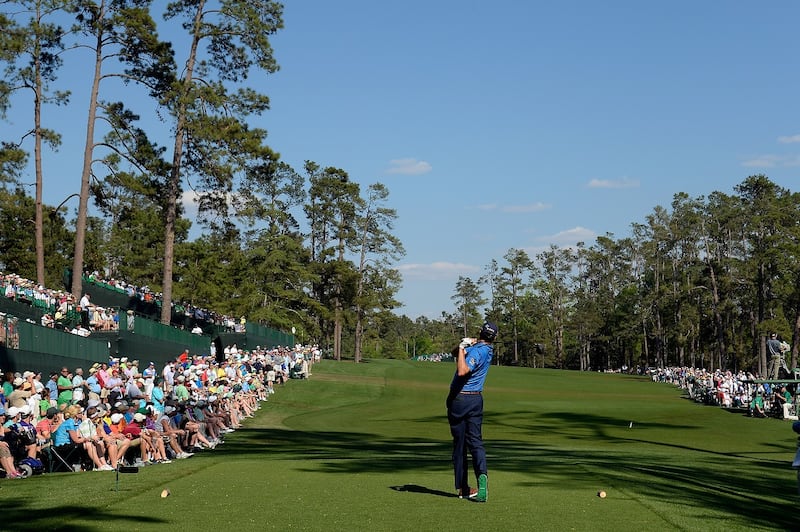
This hole has reaped some valuable birdies over the years with Danny Willett, Sergio Garcia and Patrick Reed all picking up Sunday threes over the last three years on their way to winning. This is the only hole on the course with no bunkers or water but it’s the green and the sharp incline which makes it tricky. A false front means the approach must carry to the back plateau and even at that it might not hold as the green slopes severely left-to-right, making the landing area miniscule.
15th: Firethron – Par 5, 530 yards
2018 rank: 17th (4.675) with 7 eagles, 127 birdies, 113 pars, 25 bogeys, 5 double bogeys and 3 others.
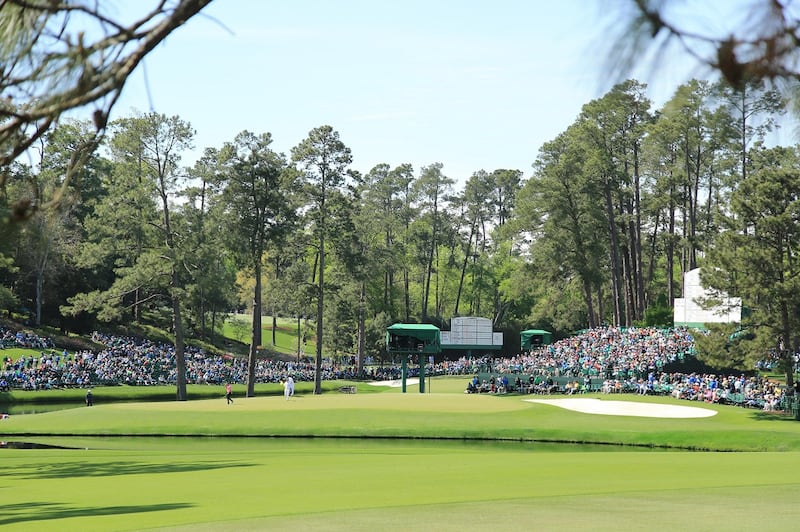
See those three “others” in the stats above? Well one of them was the 13 which Sergio Garcia made here in the first round last year after dunking five balls in the water. And what of the previous time the Spaniard had played the hole? Well that was in the final round in 2017 when his lasered approach hit the pin and set up an eagle three which would help him on the way to winning his first Major. And perhaps it those two experiences best sum up the 15th hole at Augusta. The drive must be down the right to open up a shot at the green in two but it must also avoid a clump of trees which sit on that side of the fairway. The shallow green means that a high approach is needed to hold the surface while those choosing to lay up must judge the spin perfectly on their wedge shot or they could see their ball come right back down the bank and into the water, just like Garcia’s did time and time again.
16th: Redbud – Par 3, 170 yards
2018 rank: 13th (3.029) with 1 hole-in-one, 50 birdies, 176 pars, 46 bogeys and 7 double bogeys.
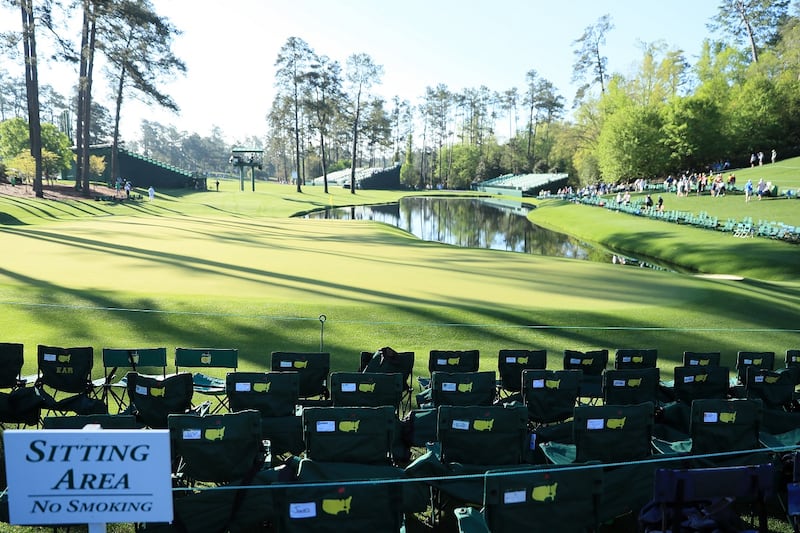
Shane Lowry made a hole-in-one here in 2016 and this hole can make-or-break a Sunday charge. Find the right part of the green with the tee shot and it’ll funnel down holeside to where the pin is cut on the final day in that back left portion. However, a slight push and the ball will stay on top of the ridge, leaving a lightning quick putt down the hill. Long leaves one of the toughest pitches on the course. Unless, of course, you’re Tiger Woods and it’s 2005. The front right pin position, usually used in the second round, is by far the toughest as it sits on top of a tiny crest which can be nigh-on impossible to access.
17th: Nandina – Par 4, 440 yards
2018 rank: 5th (4.171) with 25 birdies, 186 pars, 65 bogeys and four double bogeys.

One of the easier tee shots on the course leaves a short or medium iron to the green. However, it’s the putting surface that again causes problems. Set somewhat like an upturned saucer, the approach has to be pinpoint and also must have the loft required to carry the front bunker and hold the surface. In the famous closing stretch at Augusta, this hole regularly plays as the toughest and least likely to yield a birdie.
18th: Holly – Par 4, 465 yards
2018 rank: 10th (4.10) with one eagle, 47 birdies, 159 pars, 69 bogeys and 4 fouble bogeys.
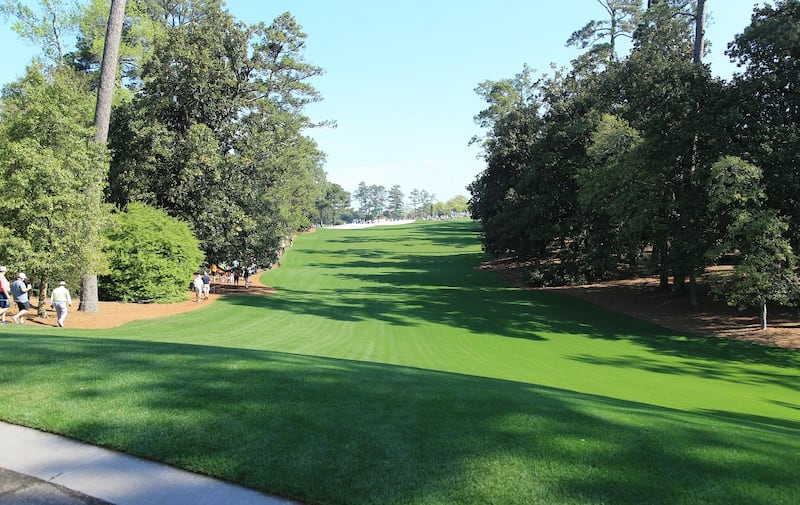
Nearly there. One of the difficulties with the drive at the 18th is that it is one of the few places on the course which requires a hard fade for a right-hander – a tough shot to call on after playing plenty of draws throughout the day. The tee box sits in a tunnel of trees with only the left fairway bunker visible as the hole turns sharply uphill and to the right. Hit a drive too straight and it’s in the sand, fade it too much and it’s in the trees. However, the fairway is wider than it looks from the tee and some of the longer players have been only hitting wedges into this green over the last few years. The pin position up the very back is the toughest while the front left pin for the final day gives a player the chance to fly it slightly long and allow it to funnel back. Right will sometimes get a nice kick into the middle of the green. Long and left and there will be serious work needed to save par.





















